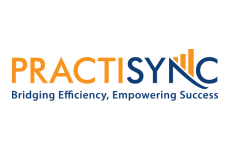
Lumbar Disc Lesions

This month we will review the existing best practice literature regarding the etiology and management of lumbar disc lesions. Check out this related video to see what a real disc nucleus actually looks like. Then register for the Orthopedic Diplomate Class 1: Best Practice Management of LBP at the ICS fall convention to learn more about the most common conditions that cause LBP, the functional problems that perpetuate those conditions, and how to dramatically improve your clinical outcomes by using a highly-effective “classification” system.
Disc lesion refers to a disruption of annular fibers and subsequent displacement of nuclear material. This may result in radicular symptoms from inflammatory/ chemical irritation or true mechanical compression of the nerve roots. Ensuing symptoms include pain, paresthesia, numbness or weakness in the distribution of the affected nerve root(s).
Lumbar Disc Lesion
Lumbar disc lesion describes the undesirable midpoint on a continuum of problems, beginning with repetitive disc sprain, leading to herniation, ending in degeneration. Multiple factors contribute to the development of lumbar disc lesions (LDL). Repetitive mechanical stressors like compressive loading, shear stress, and vibration weaken annular fibers, eventually leading to disruption. Only the outermost annular lamellae are innervated, so early disruption may be asymptomatic.
Since the posterolateral annulus is the weakest point of the disc, most disc lesions occur in this region (1). The posterior longitudinal ligament (PLL) tapers caudally, and over 90% of disc lesions occur at L4/5 or L5/S1, with the latter being most prevalent (6). The lumbopelvic bony architecture may have a predictive effect on the level of LDH- in that patients with long L5 transverse processes and/or high intercrestal lines (horizontal line drawn between the tops of the iliac crests) have a significantly higher incidence of L4/5 disk herniation, whereas low intercrestal lines and lumbarization are associated with L5/S1 disk herniation. (33)
Annular Disruption
Annular disruption is accompanied by an inflammatory reaction capable of producing “chemical radiculopathy”. Significant annular disruption can lead to disc bulging or herniation resulting in mechanical compression of adjacent nerve roots. Most radicular pain is thought to arise from a combination of mechanical and chemical factors (2).
Mechanical risk factors related to the development of lumbar disc lesions include: sedentary lifestyle or occupation, driving motorized vehicles, vibration, smoking, previous full-term pregnancy, increased BMI, and tall stature (3).
Genetic factors and aging also play a role in lumbar disc lesions. Aging is accompanied by degradation of the discs molecular structure, rendering it more vulnerable to mechanical injury. In opposition, degradation causes dehydration, meaning less nuclear material is available to herniate. Symptomatic disc herniation has a peak incidence in the fourth or fifth decades. The condition is uncommon in children (4). Approximately 35-45% of adults will experience lumbar disc lesions at some point in their lifetime and the condition is more common in men (5).
Classifications
Disc problems may be classified by location/ zone as central, subarticular (lateral recess), foraminal, or extraforaminal. The most accepted nomenclature for disc lesions is the use of the term “protrusion” to describe bulging of an intact annulus, “extrusion” to describe contiguous nuclear material that has herniated through the annulus, and “sequestration” to describe a detached nuclear fragment. The ratio of the bulge “waist” to mass may also help define protrusion vs. extrusion- i.e. protrusions have a wider annular base and extrusions have a narrower “stalk”. The degree to which the periphery of the disc is involved may further classify lesions as “focal,” meaning less than 25% of the disc circumference is displaced, “broad-based”, involving 25-50% of the perimeter, and “circumferential” involving 50-100%. (23)
The clinical presentation for lumbar disc lesions is dependent upon the degree of neurologic involvement. Asymptomatic disc herniations are present in 20-36% of the adult population (7). Lesions without mechanical compression may produce only local discomfort and pain, or sensory disturbances that radiate into the buttock or lower extremity, sometimes below the knee. Incidentally, approximately 5% of lumbar radiculopathy presentations have co-existent tarsal tunnel syndrome (34).
Mechanical compression of a nerve root can produce all of the above plus motor deficit and diminished reflexes. Radicular pain is described as sharp and superficial, sometimes accompanied by paresthesia. Clinicians should be alert for the presence of cauda equina symptoms (saddle numbness/ paresthesia, loss of bowel/bladder function, bilateral weakness, impotence, etc).
Research by Nachemson has shown that intradiscal pressures vary, based upon body position, (sitting produces the highest posture followed by standing which is followed by lying side posture and finally lying supine produces the least). Holding weighted objects or flexing forward increases intradiscal pressure (8). It follows that most disc lesions fit into the directional preference category of “extension biased”, meaning that they are alleviated by extension positions including standing, walking or lying prone, but are aggravated by flexed positions like sitting, driving or bending. “Flexion biased” disc problems are alleviated by sitting, bending or squatting and are provoked by extension.
Practitioners should assess for a directional preference by having the patient perform repetitive extensions (and flexion, if needed) while observing for symptom centralization (“the progressive reduction and abolition of distal pain in response to therapeutic loading strategies”). (25) Discontinue this assessment at any sign of peripheralization (“the phenomenon when pain emanating from the spine, although not necessarily felt in it, spreads distally into or further down the limb”). (25)
Testing
Several orthopedic tests can help identify the presence of lumbar radiculopathy, although most are not specific for LDL. A positive Lasegue Test or Straight leg raise (SLR) in the 30-70 degree range, suggests the involvement of the L4/5 or L5/S1 nerve root. Braggards test, is the addition of ankle dorsiflexion to an SLR, creating additional sciatic stretch. A Crossed straight leg raise, aka Well leg raise, which reproduces contralateral symptoms is highly suggestive of disc lesion (9). The Femoral stretch test is performed on a prone patient by passively extending the hip while flexing the knee. The reproduction of anterior thigh radicular complaints suggests the involvement of the L2/3 or L3/4 nerve roots. Kernig test, AKA Bechterews test or Flip test, is a seated SLR. The modified slump test combines most provocative maneuvers into a single test by performing a seated SLR with ankle dorsiflexion, trunk & neck flexion with practitioner overpressure and a Valsalva maneuver. The slump test shows good sensitivity (0.84) and specificity (0.83) for the lumbar disc lesion. (41,42) Milgram’s, Valsalva, Bowstring, and Soto-Hall are additional useful tests. Waddell signs can help identify the pain of a non-organic origin.
Neurologic evaluation should include assessment of sensory, motor and reflex functions. Motor assessment with a single resisted repetition will not always demonstrate a deficit. Multiple repetitions of unilateral toe raising, heel raising or sit-to-stand are more likely to identify subtle motor losses. Evidence of progressive neurologic deficit warrants surgical consultation. Clinicians should remember that central and paracentral disc herniations will generally produce compression of the inferior nerve root, i.e. L4/5 paracentral disc herniation does not compress the exiting L4 nerve root, but rather creates an L5 radiculopathy. Foraminal and extraforaminal (far lateral) herniations generally affect the exiting nerve at the same level.
Radiology
A radicular complaint in the lower extremity does not necessarily require radiographic work-up. Radiographs are appropriate for patients with “red flags” including a history of cancer, fever, chills, recent unexplained weight loss, immunosuppression, corticosteroid use, symptoms greater than 6 weeks duration or progressive neurological deficit. Plain films can rule out bony sources of encroachment, although LDL patients often show radiographic evidence of age-related degenerative change (10). MRI is the test of choice for identifying specific annular tears and disc herniations. (24) CT is an alternative if MRI is contraindicated. Clinicians must consider the fact that not all disc lesions are symptomatic. Asymptomatic disc lesions are fairly common and increase in frequency with age. A systematic review of 33 studies demonstrated the presence of asymptomatic disc bulge increased from 30% of those 20 years of age to 84% of those 80 years of age. (31)
The differential diagnosis for lumbar disc lesions includes infection, tumor, fracture, spondylosis, peripheral neuropathy, piriformis syndrome, hip or knee pathology, and herpes zoster. The presence of cauda equina symptoms (saddle numbness or paresthesia, incontinence, difficulty with urination, impotence, bilateral radicular signs or symptoms) is a medical emergency requiring immediate medical attention. Additional red flags for the diagnosis of any lumbar condition include major trauma, history of cancer, fever, chills, recent unexplained weight loss, recent bacterial infection, IV drug use, immunosuppression, corticosteroid use and pain that is worse at night or unrelieved by any position change.
Treatment
Disc herniation with radiculopathy may be successfully managed via conservative treatment (11). In fact, the majority of disc herniations will reduce over time with non-surgical care. (29,40) Large “herniations” trigger a significant inflammatory response and generally regress more quickly when compared to contained “bulges” that do not benefit from reabsorption. (28,29) The relatively avascular anatomy of the intervertebral disc may prolong recovery times. Outcomes for nonsurgical management of lumbar disc lesions are similar, regardless of age (12). The goal of conservative management should be to centralize symptoms, reduce pain & inflammation, decrease mechanical compression and improve functional core stability. Directional preference is an important point of differentiation when selecting treatment plans.
McKenzie Extension Protocol
Patients whose symptoms centralize upon extension should be treated with a McKenzie extension protocol. This program would progress from prone extension to press-ups to press-ups with overpressure, and finally mobilization and manipulation (13). These patients should avoid prolonged sitting and be counseled on the use of a lumbar cushion to promote extension. Light aerobic exercise would include walking, cross trainer without arm use and swimming.
Flexion biased patients would be better served with Williams flexion exercises and should avoid prolonged standing. Recumbent cycling or swimming would be preferred forms of light exercise.
Distraction manipulation decreases intradiscal pressure and has been shown to be more effective than an active exercise program for lumbar radiculopathy (14). Lumbar and sacroiliac joint manipulation for lumbar disc lesions should be used with caution and only when “test” positions do not peripheralize or significantly increase symptoms. At least one study estimated the risk of SMT worsening a disc herniation or causing cauda equina as exceptionally low (15).
Manipulation
Data is scarce on the effectiveness of manipulation for lumbar disc lesions. Existing research suggests some early benefit to using SMT and minimal risk when applied by a trained practitioner (16). McMorland reported that SMT produced results equal to surgical decompression in 60% of lumbar disc lesion patients who had failed earlier medical management. He concluded: “Patients with symptomatic LDH failing medical management should consider spinal manipulation followed by surgery if warranted” (17). Another study of 148 patients demonstrated significant and lasting improvement in all outcome measures (with no adverse events) when side posture HVLA was applied to the level of the disc lesion. (26) Likewise, patients with disc herniation who undergo SMT to the level of involvement demonstrate a significant decrease in radicular symptoms. (32)
A review of 90 randomized clinical trials concerning the treatment of sciatic symptoms supports only a handful of interventions: disc surgery, epidural injections, nonopioid analgesia acupuncture, and manipulation. (30)
Judicious application of sciatic nerve flossing may help mobilize and desensitize irritated nerves (18). Caution should be used with acutely irritated nerve roots as nerve flossing may increase a chemical inflammatory response, however, the technique is very effective for sub-acute and chronic nerve root irritation. Myofascial release techniques would be performed to muscles of the lumbar spine and hip including the quadratus lumborum, lumbar erectors, psoas, piriformis, gluteus, and TFL. Therapeutic stretching should be performed to areas of hypertonicity in the spine, hip, and thigh. Spinal traction, ultrasound, and laser have shown benefit for lumbar disc lesions (19). Ice and electrotherapy modalities may alleviate some of the symptoms associated with lumbar disc lesions.
Home Rehabilitation
In addition to any directional preference exercises, home rehab would include mobility (cat/camel), core stabilization (bird dog, dead bug, side bridge) and sciatic nerve flossing. Exercises should be prescribed for any identified functional weakness. There is some evidence suggesting that home inversion therapy may provide at least short-term benefits for LDH (20). Vascular and ocular risks should be considered before recommending inversion therapy. There is conflicting evidence for the usefulness of lumbar support belts in the treatment of acute back pain, although some patients report improvement (21). Patients may need to be counseled on sleep and workstation posture, lifting mechanics, footwear (no heels), weight-loss and smoking cessation.
Limited disability may be necessary for some patients but providers should encourage a return to function as quickly as possible. Failure to return to work within three months of lumbar injury is a poor prognosticator and patients who are disabled for 12 months have less than a 20% chance of ever returning to their job (22).
Conclusion
NSAIDs may help relieve inflammation. Medical co-management of acute cases with short term, tapering oral steroids is a potent anti-inflammatory adjunct. Interventional pain management may be helpful. (27) A systematic review showed no significant long-term effect for surgery compared to physical activity based interventions for leg and back pain from lumbar disc herniation. (39) Neurosurgical consult is warranted for suspected cauda equina syndrome, progressive or profound weakness, and severe intractable pain refractory to 4-6 weeks of conservative care.
References
1. Byrne TN, Benzel E, Waxman SG. Diseases of the Spine and Spinal Cord. Oxford University Press, 2000, p126.
2. Saal JA: Natural history and nonoperative treatment of lumbar disc herniation. Spine 21 (Suppl 24):2S-9S, 1996
3. Nachemson AL: Prevention of chronic back pain. The orthopaedic challenge for the 80’s. Bull Hosp Jt Dis Orthop Inst 44:1-15, 1984
4. Hoffman HJ: Childhood and adolescent lumbar pain: differential diagnosis and management. Clin Neurosurg 1980; 27:553-576
5. Hurwitz EL, Shekelle P. Epidemiology of low back syndromes. In: Morris CE, editor. Low back syndromes: integrated clinical management. New York: McGraw-Hill; 2006. p. 83-118.
6. Frymoyer JW. Back pain and sciatica. N Engl J Med 1988;318: 291-300.
7. Boden SC, Davis DO, Dina TS, Patronas NJ, Wiesel SW. Abnormal magnetic-resonance scans of the lumbar spine in asymptomatic subjects: A prospective investigation. J Bone Joint Surg Am. 1990; 72: 403-408
8. Nachemson A, Elfstrom G. Intravital dynamic pressure measurements in lumbar discs. A study of common movements, maneuvers, and exercises. Scand J Rehabil Med Suppl 1970;1:1–40
9. Deville W, van der Windt D, et al. The Test of Lase`gue: Systematic Review of the Accuracy in Diagnosing Herniated Discs. SPINE Volume 25, Number 9, pp 1140 –1147, 2000.
10. Bell GR, Ross JS. Diagnosis of nerve root compression. Myelography, computed tomography, and MRI. Orthop Clin North Am. 1992;23:405–19
11. Saal JA, Saal JS: Nonoperative treatment of herniated lumbar intervertebral disc with radiculopathy an outcome study. Spine 1989; 14:431-436
12. Pradeep Suri, MD, David J. Hunter, MBBS, Ph.D., Cristin Jouve, MD, Carol Hartigan, MD, Janet Limke, MD, Enrique Pena, MD, Ling Li, MPH, Jennifer Luz, BA, James Rainville, MD. Nonsurgical Treatment of Lumbar Disk Herniation Are Outcomes Different in Older Adults? Journal of the American Geriatrics Society J Am Geriatr Soc. 2011;59(3):423-429
13. McKenzie RA, May S. The lumbar spine: mechanical diagnosis and therapy. 2nd ed. Waikenae, NZ: Spinal Publications;2003
14. Gudavalli MR, Cox JM, Cramer GD, Baker JA, Patwardhan AG. Intervertebral disc pressure changes during low back treatment procedures. BED Advances in Bioengineering; 1998. p. 39
15. Oliphant D. Safety of Spinal Manipulation in the Treatment of Lumbar Disk Herniations: A Systematic Review and Risk Assessment. J Manipulative Physiol Ther 2004 (Mar); 27 (3): 197–210
16. Snelling NJ, Spinal manipulation in patients with disc herniation: A critical review of risk and benefit. International Journal of Osteopathic Medicine
Volume 9, Issue 3 , Pages 77-84, September 2006
17. McMorland G, Suter E, Casha S, du Plessis SJ, Hurlbert RJ.
Manipulation or microdiskectomy for sciatica? A prospective randomized clinical study. J Manipulative Physiol Ther. 2010 Oct;33(8):576-84. doi: 10.1016/j.jmpt.2010.08.013
18. Butler DS. The sensitive nervous system. Adelaide, Australia: Noigroup Publications; 2000
19. Zeliha Unlu, Saliha Tasc, Serdar Tar han, Yuksel Pabuscu, and Serap Islak, Comparison Of 3 Physical Therapy Modalities For Acute Pain In Lumbar Disc Herniation Measured By Clinical Evaluation And Magnetic Resonance Imaging. JMPT Volume 31(3) 2008 191-98
20. Sheffield, F. “Adaptation of Tilt Table for Lumbar Traction.” Arch Phys Med Rehabil 45 (Sep. 1964): 469-472
21. van Duijvenbode ICD, et al. “Lumbar supports for prevention and treatment of low back pain (Review).” Cochrane Database of Systematic Reviews 2008, Issue 2.
22. Andersson GB, Svensson HO, Oden A: The intensity of work recovery in low back pain. Spine 8:880-884, 1983
23. David F. Fardon, MD Nomenclature, and Classification of Lumbar Disc Pathology SPINE Volume 26, Number 5, pp E93–E113
24. Roudsari, B., & Jarvik, J.G. (2010). Lumbar spine MRI for low back pain; Indications and yield. American Journal of Roentgenology, 195(3), 550-559
25. McKenzie R, May S. The Lumbar Spine Mechanical Diagnosis & Therapy. Spinal Publications 2003
26. Serafin Leemann, Cynthia K. Peterson, Christof Schmid, Bernard Anklin, and B. Kim Humphreys. Outcomes Of Acute And Chronic Patients With Magnetic Resonance Imaging–confirmed Symptomatic Lumbar Disc Herniations Receiving High-velocity, Low-amplitude, Spinal Manipulative Therapy: A Prospective Observational Cohort Study With One-year Follow-up. JMPT 01/2014; DOI:10.1016/j.jmpt.2013.12.011
27. [Guideline] Manchikanti L, Abdi S, Atluri S, Benyamin RM, Boswell MV, Buenaventura RM, et al. An update of comprehensive evidence-based guidelines for interventional techniques in chronic spinal pain. Part II: guidance and recommendations. Pain Physician. Apr 2013;16(2 Suppl): S49-283.
28. Morgan W. Management of Lumbar Disc Derangements. Presentation at the 2015 American College of Chiropractic Orthopedists Convention. Las Vegas NV April 25, 2015.
29. Chiu CC, Chuang TY, Chang KH, Wu CH, Lin PW, Hsu WY. The probability of spontaneous regression of lumbar herniated disc: a systematic review. Clin Rehabil. 2015 Feb;29(2):184-95.
30. Lewis RA, Williams NH, Sutton AJ, Burton K, Din NU, Matar HE, Hendry M, Phillips CJ, Nafees S, Fitzsimmons D, Rickard I, Wilkinson C. Comparative clinical effectiveness of management strategies for sciatica: systematic review and network meta-analyses. Spine J. 2015 Jun 1;15(6):1461-1477.
31. Brinjikji W, Luetmer PH, Comstock B, Bresnahan BW, Chen LE, Deyo RA, Halabi S, Turner JA, Avins AL, James K, Wald JT, Kallmes DF, Jarvik JG. Systematic literature review of imaging features of spinal degeneration in asymptomatic populations. AJNR Am J Neuroradiol. 2015 Apr;36(4):811-6.
32. Ehrler M, Peterson C Leemann S et al. Symptomatic, MRI Confirmed, Lumbar Disc Herniations: A Comparison of Outcomes Depending on the Type and Anatomical Axial Location of the Hernia in Patients Treated With High-Velocity, Low-Amplitude Spinal Manipulation. JMPT Mar-April 2016, Volume 39, Issue 3, Pages 192–199
33. Dang L Chen Z, Liu X, et al. Lumbar Disk Herniation in Children and Adolescents: The Significance of Configurations of the Lumbar Spine. Neurosurgery. 2015 Dec;77(6):954-9; discussion 959.
34. Zheng C, et al. The prevalence of tarsal tunnel syndrome in patients with lumbosacral radiculopathy. Eur Spine J. 2016 Mar;25 (3):895-905.
35. Wildenauer JR. Free fragment resorption at L4-5 following chiropractic treatment. JACO 2009 Mar;6(1): p.10-16
36. Ahn SH, Ahn MW, Byun WM. Effect of the transligamentous extension of lumbar disc herniations on their regression and the clinical outcome of sciatica. Spine. 2000;25(4):475–480.
37. Cowan, N.C. et al. The natural history of sciatica: A prospective radiological study
Clinical Radiology , Volume 46 , Issue 1 , 7 – 12
38. Maigne JY, Rime B, Deligne B. Computed tomographic follow-up study of fortyeight cases of nonoperatively treated lumbar intervertebral disc herniation. Spine. 1992;17:1071–4.
39. Fernandez M, et al. Surgery or physical activity in the management of sciatica: a systematic review and meta-analysis. Eur Spine J. 2016 Nov;25(11):3495-3512.
40. Zhong M, Liu JT, Jiang H, Mo W, Yu PF, Li XC, Xue RR. Incidence of Spontaneous Resorption of Lumbar Disc Herniation: A Meta-Analysis. Pain Physician. 2017;20(1): E45–E52.
41. Majlesi J, Togay H et al. The sensitivity and specificity of the Slump and the Straight Leg Raising tests in patients with lumbar discherniation. J Clin Rheumatol. 2008 Apr;14(2):87-91.
42. Urban LM., MacNeil BJ. Diagnostic Accuracy of the Slump Test for Identifying Neuropathic Pain in the Lower Limb. J Orthop Sports Phys Ther 2015;45(8):596–603.

















